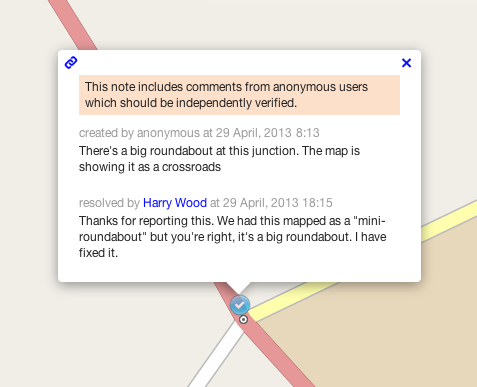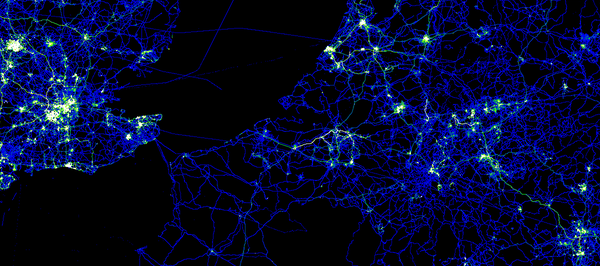OpenStreetMap, the collaborative map of the world often called “the Wikipedia of mapping”, has unveiled a new feature designed to make it even easier to contribute.
For the first time, anyone viewing the map can suggest a correction – such as a renamed business, a missing footpath, or a changed road layout – without learning to use map editor software.

The corrections will be picked up by OpenStreetMap’s million-strong army of volunteer mappers. A local mapper can visit the location to check the suggested information, and then update the map.
OpenStreetMap’s data is used by some of the biggest mapping names on the web, including Foursquare, Craigslist, Wikipedia, Mapquest, and Apple’s iOS Maps app. It is also extensively used in humanitarian operations, most famously after the Haiti earthquake of 2010.
The new feature is part of a drive to open up OpenStreetMap contributions to more people – so that everyone can add their local knowledge to the map. Later this spring, an all-new HTML5 map editor will be coming to openstreetmap.org; its intuitive controls and clear walk-throughs will encourage more map users to take the plunge and become map editors.
“It’s the detailed local knowledge of our contributors that makes OpenStreetMap so much in demand from web and app developers,” explained Simon Poole, Chairman of the non-profit OpenStreetMap Foundation and a Switzerland-based mapper himself.
“By making it even easier to add to the map, we’re increasing the amount of on-the-ground knowledge we can capture – further distancing OSM from the traditional map data companies and their lack of local expertise.”
To add a note or correction to OpenStreetMap, find your area on openstreetmap.org and click ‘Add a note’ in the bottom right corner.
Background information
Notes are freeform natural text, read by other people, making this is a very simple way to communicate any problems we notice about the map without needing to get to grips with OpenStreetMap and its tagging system. Although this functionality has been available for a while on the third party site OpenStreetBugs, adding it to the main OpenStreetMap site brings it to a much greater audience.
Although it is not necessary to have an OSM account to create a note or comment on it, registered users can see all the notes they have created or commented on, and will receive automatic email notifications if the status of a note changes. OpenStreetMap’s enthusiastic community is its greatest strength, and these notifications facilitate an exchange between the original reporter and experienced mappers.
A full API is available for the notes so that third party sites or apps can query existing notes, create and comment on them – opening up possibilities for mobile bug reporting and fixing. The system is expressly designed for high-quality reports from individual users, not automated error checks or ‘bots’.
OpenStreetMap takes copyright very seriously. Registered users agree not to copy from other maps when signing up, and are requested to verify each suggested correction from non-registered users using ‘on the ground’ information. OpenStreetMap is a map for the people, by the people, and made with personal local knowledge.
Further details are available on the OpenStreetMap community wiki.

